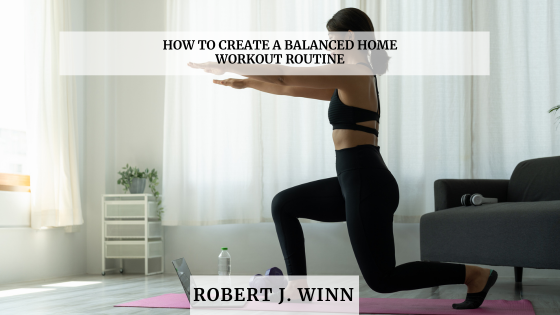A balanced home workout routine is essential for achieving fitness goals and maintaining overall health. With the right approach, you can design an effective exercise plan that incorporates various types of workouts, keeps you motivated, and fits seamlessly into your daily schedule. Here’s how to create a balanced home workout routine that promotes strength, endurance, and flexibility.
Assess Your Fitness Goals
The first step in designing a balanced home workout routine is to assess your fitness goals. Are you aiming to build muscle, improve cardiovascular health, increase flexibility, or lose weight? Identifying your objectives will help you tailor your workout routine to meet your specific needs. For example, if your goal is to build muscle, you’ll want to include strength training exercises. If improving cardiovascular health is your focus, incorporating cardio workouts is essential.
Incorporate a Variety of Exercises
A well-rounded workout routine should include a mix of different types of exercises to target various aspects of fitness. Aim to incorporate the following components into your routine:
- Cardiovascular Exercises: Activities like jumping jacks, running in place, or high knees elevate your heart rate and improve cardiovascular health. Aim for at least 150 minutes of moderate-intensity cardio or 75 minutes of vigorous-intensity cardio per week.
- Strength Training: Use bodyweight exercises like squats, push-ups, and lunges, or incorporate resistance bands or dumbbells to build muscle strength. Strength training should target all major muscle groups and be done at least two days a week.
- Flexibility and Mobility: Incorporate stretching exercises or yoga to improve flexibility, enhance range of motion, and prevent injury. Stretch major muscle groups after workouts, and consider adding a dedicated flexibility session to your routine.
- Core Workouts: Strengthening your core is crucial for overall stability and posture. Include exercises such as planks, Russian twists, and bicycle crunches to target your abdominal and lower back muscles.
Plan Your Weekly Schedule
Design a workout schedule that balances different types of exercises throughout the week. For example:
- Monday: Cardio (e.g., 30 minutes of running or cycling)
- Tuesday: Strength Training (e.g., full-body workout with weights or resistance bands)
- Wednesday: Flexibility and Mobility (e.g., yoga or stretching routine)
- Thursday: Cardio (e.g., high-intensity interval training)
- Friday: Strength Training (e.g., upper body workout)
- Saturday: Core Workouts (e.g., 20 minutes of core exercises)
- Sunday: Rest or Light Activity (e.g., a gentle walk or relaxation exercises)
Set Realistic and Progressive Goals
Set achievable goals to keep yourself motivated and track your progress. Start with manageable workouts and gradually increase the intensity, duration, or complexity as you build strength and endurance. For example, you might begin with 20-minute sessions and work up to 45 minutes as you become more comfortable.
Stay Consistent and Adaptable
Consistency is vital to seeing results from your workout routine. Stick to your schedule as closely as possible, but also be adaptable. Life events or unexpected obstacles may arise, so it’s essential to be flexible with your routine. If you miss a workout, don’t get discouraged—adjust your plan and get back on track.
Creating a balanced home workout routine involves:
- Assessing your fitness goals.
- Incorporating a variety of exercises.
- Planning a weekly schedule.
- Setting realistic goals.
- Staying consistent.
By following these steps, you can develop a practical workout routine that supports your overall health and fitness, making it easier to achieve your personal goals from the comfort of your home.

